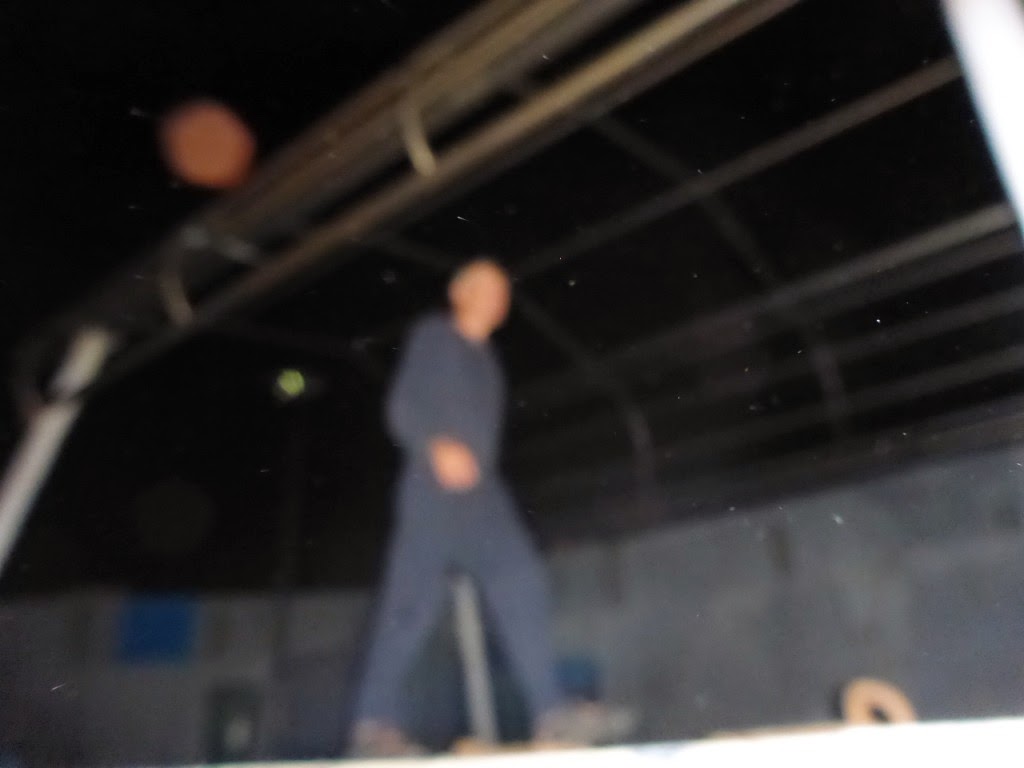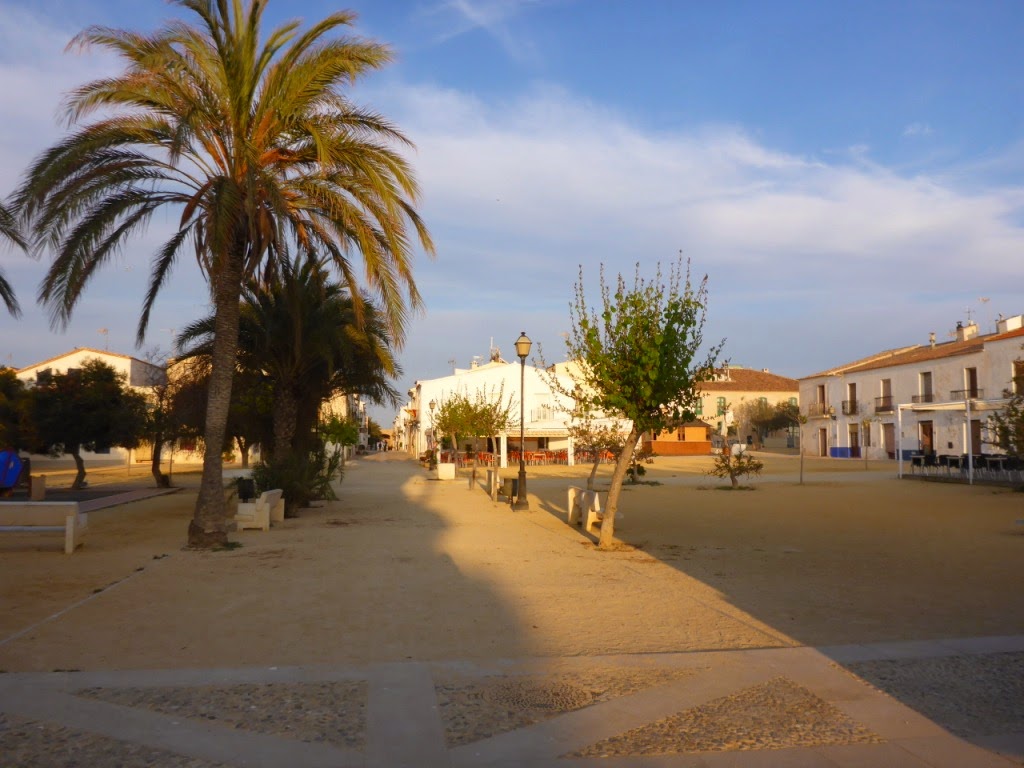Dimanche 19 Avril 2015
Je me lève à 4 h 20 et je vois que le voilier voisin est
déjà parti. Jens se réveille vers 5 h et tous les deux, on remarque que Maja
bouge pas mal, les vagues rentrent un peu dans le port, le vent a tourné. Donc
on décide de la tirer un peu le long du quai et de prendre la place du voilier
qui est parti. Le quai fait un coude et on sera un peu plus à l’abri comme ça.
On démarre le moteur, Jens monte sur le quai en pyjama et tire Maja et moi je
donne un petit coup de moteur pour l’aider, c’est contre le vent. En 5 mn,
c’est fait, Maja est amarrée à sa nouvelle place et on se recouche. Nous avions
pensé rester une nuit ici, mais on décide, en prenant le petit-déjeuner, de
rester encore un jour ici. Le matin, nous allons à la découverte de l’ile de
Tabarca. Une partie est fortifiée et construite et une autre, plus grande, est
une lande. Nous allons sur la lande jusqu’au bout, à peu près 2 km, nos seuls
compagnons sont des mouettes et des chats. Nous rentrons, et vers 11 h, les
touristes commencent à arriver en ferries et en bateau privés. Nous trouvons
qu’ils sont nombreux, mais un policier avec lequel nous discutons, dit que ce
n’est rien par rapport à l’été. Un poste de police est toujours ouvert et trois
policiers veillent sur … 15 habitants (l’hiver) ! On est en sécurité ici.
Nous voulons soutenir l’économie locale et allons au restaurant, il y a au
moins 20 restaurants, on a de quoi choisir. Nous allons au
« Almadraba » qui a une belle vue sur le port et la mer. Une grande
table est occupée par des Norvégiens. Ensuite, nous allons au musée locale et,
étant plus de 65 ans, nous rentrons gratuitement. L’ile a été occupée par les
pirates, abandonnée puis repeuplée au 18 ème siècle par des prisonniers de pirates rachetés à la Tunisie par l’Espagne. Pauvres gens, on les met là sur
une ile aride, sans eau, mais ils ont survécu, apparemment. L’ile a été
fortifiée et a servi de poste de défense aussi. La pêche a été la principale
ressource et une des techniques était donc cette « almadraba », un
labyrinthe de filets d’où les thons ne pouvaient plus sortir. Maintenant, l’ile
et ses alentours sont une réserve naturelle où on ne peut pas pêcher. Vers 17
h, les touristes commencent à repartir et vers 20 h, les derniers à partir sont
les employés des restaurants. A 20 h 30, nous avons pratiquement l’ile pour
nous. Nous allons voir le soleil se coucher puis faisons de même.
Sunday, April 19, 2015
I get up at 4:20 am and I see that the neighbor sailboat
is gone. Jens wakes up at around 5 am and both, we note that Maja is moving more, waves are entering a little in
the harbor, the wind has turned. So we decide to pull Maja a little along the
dock and take the place of the boat which is gone. The dock makes a bend and it
will be a little quieter there. The engine is started, Jens climbs on the dock in
pajamas and pulls Maja while I give a little push with the engine to help, it's against the wind.
In 5 minutes, it's done, Maja is moored to her new place and we go back to
bed. We had planned to stay one night, but we decide, while eating
breakfast, to stay one more day here. In the morning, we are going to explore
the island of Tabarca. One part is fortified and built and another larger one
is a moor. We are going to the end of the moor, about 2 km, our only companions
are seagulls and cats. We return, and at around 11 am, tourists began arriving
in ferries and private boats. We find that they are many, but a policeman with
whom we talk, says it is nothing compared to the summer. A police station is open and three police officers take care of
... 15 inhabitants (in winter)! We are safe here. We want to support the local
economy and go to a restaurant, there are at least 20 restaurants, we have
enough to choose from. We go to the "Almadraba" which has a beautiful
view of the harbor and the sea. A large table is occupied a group of Norwegians.
Then we go to the local museum and being over 65 years, we don’t pay. The
island was occupied by pirates, abandoned then repopulated in the 18th century
by prisoners taken by pirates
and bought back from Tunisia by Spain. Poor people, they were put here on a
barren island, where there was no water, but they survived, apparently. The island was
fortified and served as a defense post too. Fishing was the main resource and a
technic used was this "almadraba", a labyrinth of nets where the tuna
fish could not escape. Now the island and its surrounding area are a nature
reserve where fishing is not allowed. At around 5 pm, the tourists begin to
leave and at 8 pm, the last to leave are the restaurant employees. At 8:30 pm, we have the island (almost) just
for us. We go to see the sunset and then go home to Maja.
Jens, en pyjamas, sur le quai, à 5 h du matin
Jens, in his pajamas, on the dock, at 5 am
Dimanche matin
Sunday morning
La lande et le phare
The moor and the lighthouse
La côte
The coast
Le point le plus à l'est de l'ile
The eastern end of the island
Un nid de mouette
A seagull's nest
Un des ferries
One of the ferries
Dimanche après-midi
Sunday afternoon
L'entrée du village
The village entrance
Une rue
A street
La grand place
Main square
L'église
The church
La muraille
The wall
Un petit chat sur une grande muraille
A little cat on a big wall
Dimanche soir
Sunday evening
Tabarca















